I read last week that chairmaker Dave Sawyer passed away. I never knew him, but I felt very connected to his work through our many mutual friends. Over the past ten years or so I’ve been working on this idea in my head (and down on “paper” well, really this screen) about the people who taught me woodworking and about others, like Dave, who were part of what I call my “Craft Genealogy.” My intention is for it to be a book, but it’s a long ways off.
Four people who were huge influences on me were Jennie Alexander, Drew Langsner, Daniel O’Hagan and Curtis Buchanan. Dave was close friends with all of them, and their stories are intertwined.
I worked most closely with Alexander and Langsner; in and out of their homes on a regular basis. When Jennie was getting older we often spoke of what would happen when she went to the “boneyard.” Among the concerns were what academics call her “papers.” These eventually went to Winterthur Museum’s research library, where I then began to sift through them, all the way back to about 1973 or 74. The pandemic interrupted that research – but I’ll pick it back up before too much longer.
I knew Alexander as well as anyone did. From time to time, I used to ask how she came to write her book back in the 1970s. “It was in the air” she used to say. “If I didn’t write it, someone else would.”
In the mid-1970s, Alexander was a very-part-time woodworker. A busy lawyer with a young family, she could only work her chair stuff on sporadic weekends and holidays here & there. Many of us begin that way, squeezing in our craft when real life allows us some hours here & there. She learned mostly by studying old chairs in museum collections and experimenting with the tools and materials. And asking questions of anyone who might know something.
Through a couple different connections, JA was told of someone in New Hampshire who made chairs “the old way…” or something like that. And so, in 1976 Alexander wrote to Dave Sawyer and introduced himself and his chairs. And that connection pushed JA’s chairmaking further along than anything before.
So yes, chairmaking “was in the air” – but what I found out when I began studying JA’s letters is that it was in the air around Dave Sawyer.
Unlike Alexander, Sawyer was a full-time craftsman, at that point, making wooden hay forks and ladderback chairs. So Alexander would fire off questions in the mail & Dave would send ideas and comments back and forth. Eventually they got together in New Hampshire and down in Baltimore. From that beginning, they became lifelong friends.
Sawyer’s first letter to JA notes: “I’ve made near 200 ladderback chairs, most 3-slat, most with hickory bark seats – using just the same methods you do (unless you turn your posts – I shave mine).”
Alexander did turn her posts at that time, but soon shifted to an all-shaved chair. A version of that story is recounted in the new version of Make a Chair from a Tree. I suspect Sawyer was an un-credited catalyst for that change in technique. After some back & forth, Sawyer got right to the point:
“I want you to come here next June for a couple of days – ride the train from Baltimore – I’ll meet you in Bellows Falls at 12:30 AM or whenever (can also meet buses in Charlestown or Claremont, or I suppose you could drive if you wanted to be so foolish.) We can do barking one day and I’ll show you anything you like about chairmaking too.” [PF emphasis]
In the early 1980s Dave, then in Vermont, shifted his attention from ladderback chairs to Windsor chairs, and those are what he became most known for. And his were the best Windsor chairs produced in this country.
When I learned Windsor chairmaking from Curtis Buchanan in 1987, he shared as much as he knew freely – because he said that’s what Dave did for him. Curtis has tweaked a lot of chair designs over 40 years but the DNA of many of his chairs is pure- Dave Sawyer. Curtis always tells the story of Dave saying to him that his “questions were getting too good – you have to just come up here and I’ll show you what to do…”
I learned something from 1976 Dave Sawyer just a few years ago – the notch for splicing hickory bark seating. JA struggled with bark at first and Dave tried to sort it out for Alexander. In one of Dave’s letters he cut out a sample joint in paper & pinned it to the letter. 45 years later, I adopted it on the spot – Alexander never did, continued to tie knots in the bark seats throughout her career. Stubborn.

I’m still gathering material for this history of how this particular green woodworking branch formed and grew. It doesn’t begin with Dave, nor does it end with him. But he’s a critical part of the story. His impact was huge – back when it was really just a few dozen people exploring working this way. He retired many years ago but his son George took over making “Sawyer Made” chairs several years back. So Dave’s designs and legacy will carry on. My goal with my Craft Genealogy project is to put these people’s stories together, to make sure we don’t lose track of who the people were who got us here.
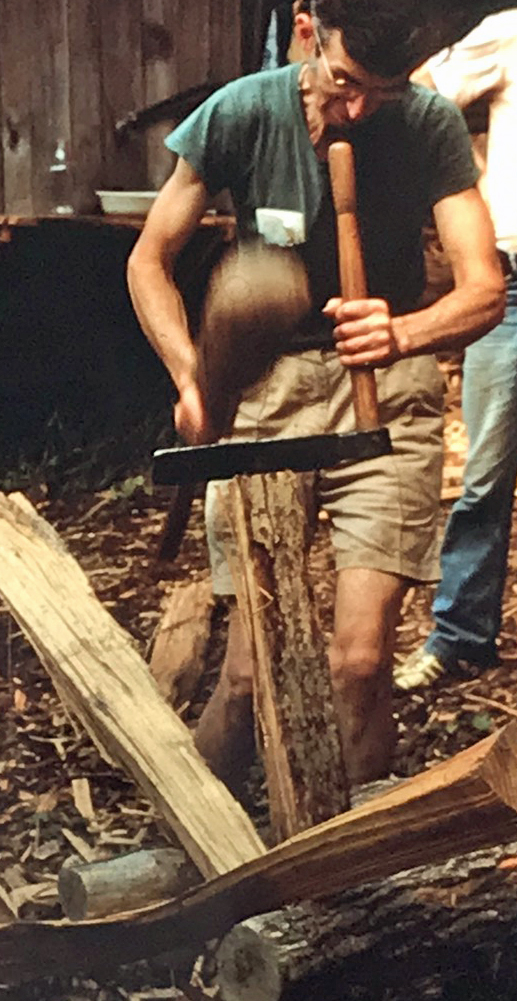


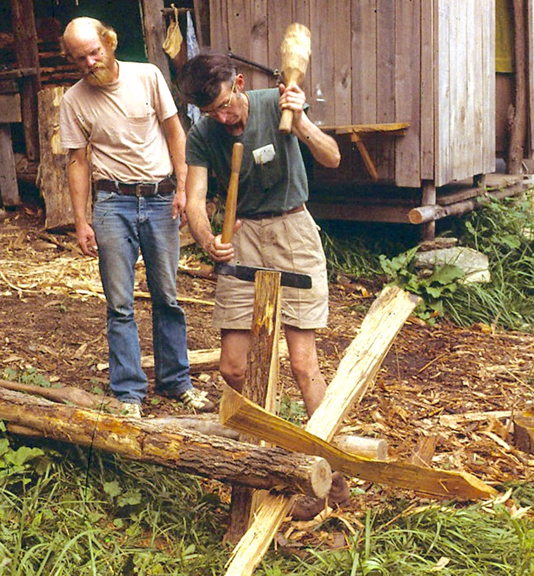
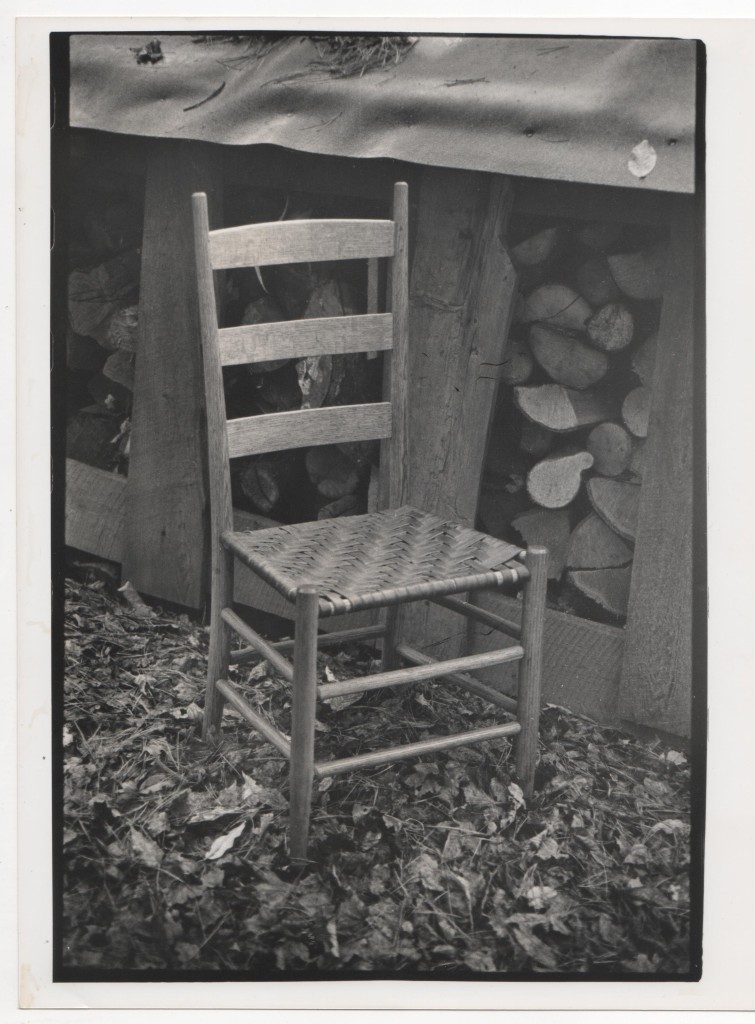
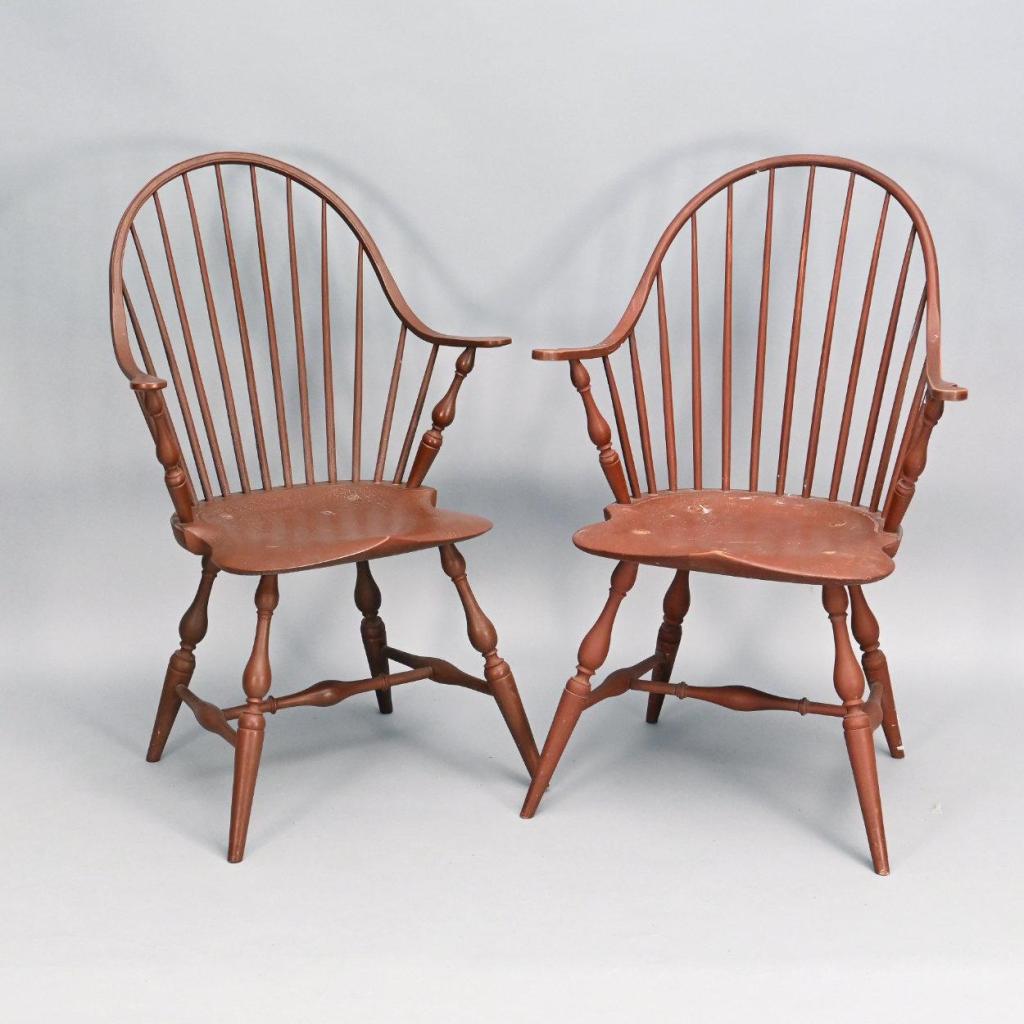

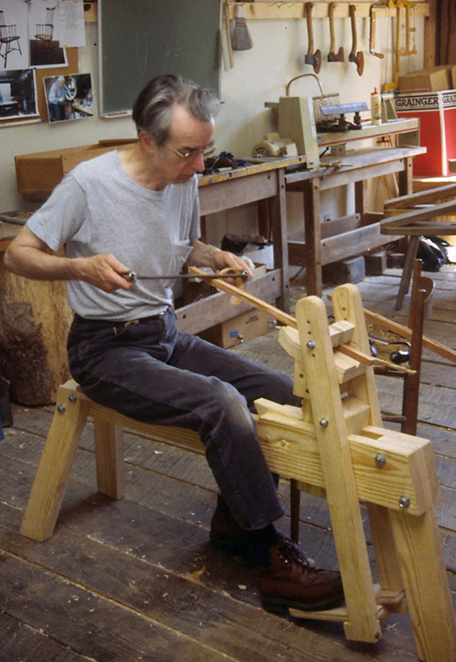
I’m glad you’re doing that.
Thanks, Peter, for putting these stories together. Jennie thought for years that Dave was putting on an Old Yankee act. I thought that was pretty funny, because that was the last thing he ever would have thought of, or been able to do. He just was the way he was. Old Yankee with an engineer’s education, which I believe involves a lot of puns. He came from a family of artists, fine and commercial, and learned drafting — it showed in his drawings, which are beautiful. And he could think about the complex 3-D math of the Windsor chair, and tweak it to make the chair more comfortable, stable, and beautiful. I was lucky to have watched him work for all those years.
Lovely post Peter. And a great idea.
It is interesting how little tidbits find their way through the generations. I am in the mists of carving legs and aprons for my never ending hayrake table project. As I carve and invariable make small mistakes I can hear JA saying “the eye is very forgiving”. Thank you for sharing her wisdom.
[…] Array ArrayArray […]
[…] of craftspeople he taught and influenced over the decades. As Peter Follansbee points out in his recent blog post, Sawyer even helped guide fellow titans Jennie Alexander and Curtis Buchanan in their own chair […]
[…] of craftspeople he taught and influenced over the a long time. As Peter Follansbee factors out in his latest weblog put up, Sawyer even helped information fellow titans Jennie Alexander and Curtis Buchanan in their very […]
[…] of craftspeople he taught and influenced over the decades. As Peter Follansbee points out in his recent blog post, Sawyer even helped guide fellow titans Jennie Alexander and Curtis Buchanan in their own chair […]
[…] of craftspeople he taught and influenced over the decades. As Peter Follansbee points out in his recent blog post, Sawyer even helped guide fellow titans Jennie Alexander and Curtis Buchanan in their own chair […]
[…] of craftspeople he taught and influenced over the many years. As Peter Follansbee factors out in his recent blog post, Sawyer even helped information fellow titans Jennie Alexander and Curtis Buchanan in their very […]
[…] of craftspeople he taught and influenced over the decades. As Peter Follansbee points out in his recent blog post, Sawyer even helped guide fellow titans Jennie Alexander and Curtis Buchanan in their own chair […]
Very cool, glad you’re doing this. Possibly the only thing more interesting than all these centuries-old tools and craft are the people who devised and passed them on. Their stories are always the best part!
In one of the two pictures of Sawyer with froe and maul, he has the maul in his right hand, while in the other he has it in the left. Do you suppose one photo is reversed, or did he do this task ambidextrously?
Thanks for the fine tribute post!
My guess is the photo is reversed; but like I said, I didn’t know him. But Id bet it’s a reversed picture. They’re both from old 35mm slides. easy to switch around when scanning.
Closer inspection (clothing, background, construction of brake) indicates you are right: those two photos are probably from the same day, and one is reversed. He might have switched hands but I bet his shirt pocket didn’t switch sides…
[…] post originally appeared on Peter Follansbee’s blog, Joiner’s Notes. Reprinted here with […]